Can You Get Dental Implants After Having Dentures?
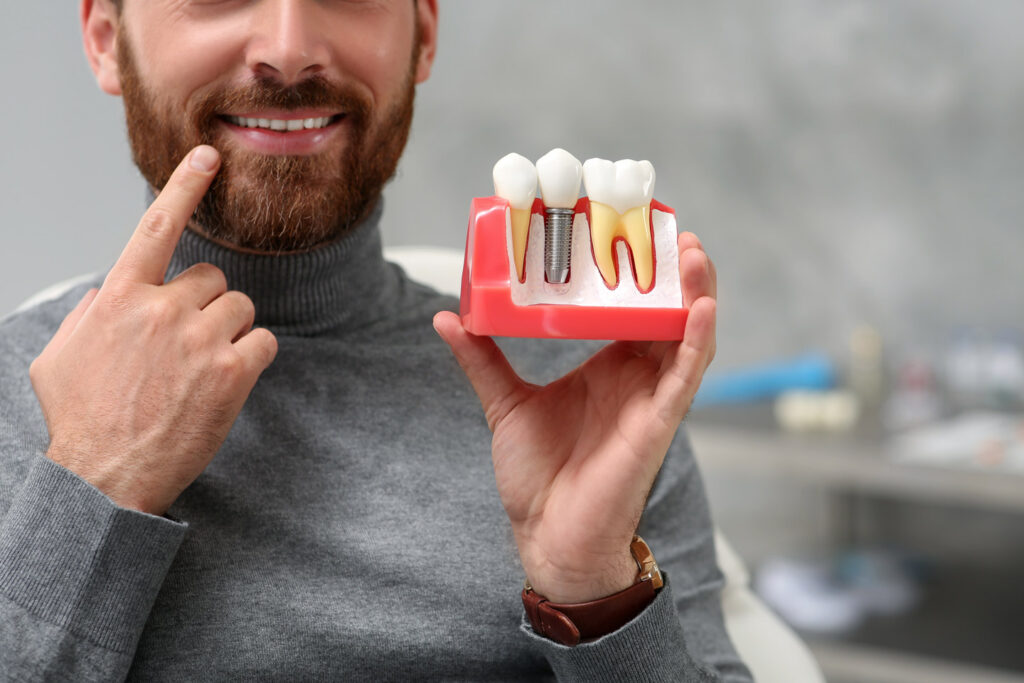
Can You Get Dental Implants After Having Dentures? When it comes to dental health and aesthetics, individuals are often seeking the best possible solutions to restore their smiles and regain their confidence. One common scenario that arises is whether it’s possible to get dental implants after having dentures. Understanding Dental Implants and Dentures Dentures: A Traditional Solution Dentures have been a traditional solution for individuals dealing with missing teeth for many years. These removable dental appliances come in two main types: full dentures and partial dentures. Full dentures replace all teeth in the upper or lower arch, while partial dentures are used when some natural teeth are still present. While dentures provide a functional solution, they can have limitations in terms of stability and comfort. Dental Implants: A Modern Advancement On the other hand, dental implants represent a more advanced and permanent solution for replacing missing teeth. A dental implant consists of a titanium post that is surgically inserted into the jawbone, mimicking the natural tooth root. This post provides a stable foundation for a prosthetic tooth, known as a crown, to be attached. Dental implants offer numerous benefits, including improved stability, natural appearance, and the preservation of jawbone health. Transitioning from Dentures to Dental Implants Is It Possible? Now, let’s address the question at hand: Can you get dental implants after having dentures? The answer is generally yes, but several factors come into play. Jawbone Health One crucial consideration is the health of your jawbone. Dental implants require a sufficient amount of healthy bone to provide stability and support. If you’ve been wearing dentures for an extended period, you might have experienced some bone loss due to the absence of tooth roots. However, this doesn’t necessarily disqualify you from getting dental implants. Modern advancements, such as bone grafting procedures, can help regenerate bone in the implant area. Evaluation and Planning Before making the transition, your dentist will conduct a thorough evaluation of your oral health. This includes assessing the condition of your jawbone and determining whether additional procedures are needed before implant placement. Comprehensive planning is essential to ensure the success of your dental implant procedure. Benefits of Transitioning Transitioning from dentures to dental implants can offer a range of benefits. Dental implants provide a more stable and comfortable fit compared to traditional dentures. They also look and feel more natural, allowing you to speak and eat with confidence. Additionally, dental implants can stimulate the jawbone, preventing further bone loss and maintaining your facial structure. The Implant Process: What to Expect Implant Placement The process of getting dental implants typically involves several steps. The first step is the surgical placement of the implant post into the jawbone. This procedure is performed under local anesthesia, ensuring your comfort throughout. Osseointegration After the implant is placed, a process called osseointegration occurs. This involves the fusion of the implant post with the surrounding jawbone over a period of a few months. This fusion provides the strong foundation needed to support the prosthetic tooth. Prosthetic Attachment Once osseointegration is complete, an abutment is attached to the implant post. The abutment serves as a connector between the implant and the prosthetic tooth. Finally, a custom-made crown is placed onto the abutment, completing the dental implant restoration. FAQs: How long do you have to get implants after dentures? The timeframe for receiving implants after dentures can vary, with some individuals opting for implants immediately after denture placement, while others choose to transition at a later time after adjusting to dentures. Do you get dentures before implants? Dentures can be obtained before or after implants based on individual preferences and dental circumstances. Some people may start with dentures and then consider implants for a more permanent solution, while others might choose implants initially for enhanced stability. How painful are implants for dentures? The discomfort associated with implants for dentures is usually mild and manageable. Local anesthesia is used during the procedure to minimize pain, and any postoperative discomfort can be alleviated with prescribed medication and proper aftercare. Can dental implants hold dentures? Yes, dental implants can effectively anchor dentures in place. Implant-supported dentures offer a secure fit that minimizes slippage or movement, allowing individuals to confidently enjoy their daily activities without worrying about denture stability. Do implants feel better than dentures? Dental implants often provide a more natural and comfortable experience compared to traditional dentures. Implants feel like natural teeth, allowing for improved chewing efficiency, speech, and a heightened sense of self-confidence. Can dentures be fixed permanently? Yes, dentures can be fixed permanently with implant-supported options. Implant-retained dentures provide a stable and reliable solution, eliminating concerns about denture movement, discomfort, and the need for adhesives. This approach offers long-term benefits and a restored quality of life. Conclusion In conclusion, the transition from dentures to dental implants is indeed possible and can offer significant improvements in terms of stability, comfort, and aesthetics. The decision to undergo this transition should be made after careful consideration and consultation with a qualified dental professional. Factors such as jawbone health, evaluation, planning, and the implant process itself should all be taken into account.
Can Dental Implants Be Removed and Replaced With Dentures?
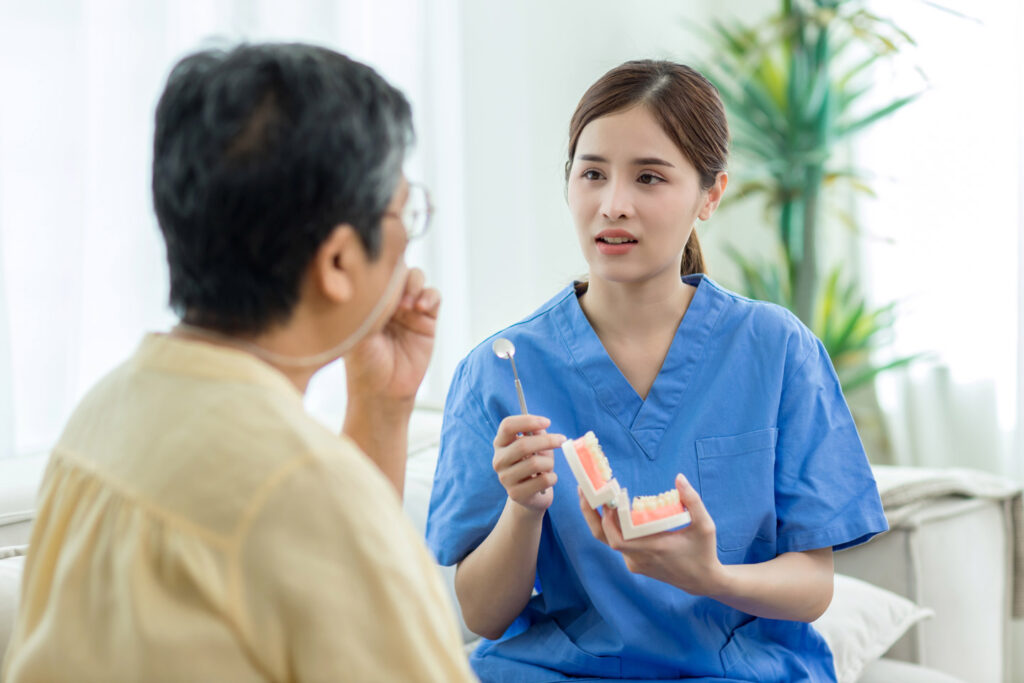
Can Dental Implants Be Removed and Replaced With Dentures? Preparing for oral surgery involves several considerations, including whether or not to brush your teeth before the procedure. Maintaining optimal oral hygiene is crucial not only for promoting overall oral health but also for minimizing the risk of complications during and after surgery. In this comprehensive guide, we will delve into the topic of pre-operative oral hygiene and address common questions and concerns regarding brushing your teeth before oral surgery. What Are Dental Implants? Dental implants are titanium posts that are surgically placed into the jawbone to act as artificial tooth roots. They provide a strong foundation for fixed or removable replacement teeth, which are designed to match the patient’s natural teeth seamlessly. Dental implants have a high success rate and can last a lifetime with proper care. The Need for Dental Implant Removal While dental implants are durable and long-lasting, some situations may necessitate their removal. The most common reasons include: Implant Failure: In some cases, dental implants may fail to integrate properly with the jawbone, leading to instability and discomfort. Implant failure can occur due to various factors, such as infection, insufficient bone density, or improper placement. Severe Infection: In some cases, dental implants may fail to integrate properly with the jawbone, leading to instability and discomfort. Implant failure can occur due to various factors, such as infection, insufficient bone density, or improper placement. Bone Loss: In rare cases, excessive bone loss around the implant may occur, making it difficult to support the prosthetic tooth. This can happen over time due to factors like gum disease or bite misalignment. Allergic Reactions: Although rare, some individuals may experience allergic reactions to the materials used in the dental implant, leading to inflammation and discomfort. The Procedure for Dental Implant Removal The process of dental implant removal involves several steps, and it is essential to seek the expertise of a qualified oral surgeon or dentist. The general procedure includes: Examination and Assessment: Before removal, the dentist will thoroughly examine the implant site and take X-rays to assess the condition of the implant and surrounding bone. Anesthesia: Local or general anesthesia will be administered to ensure the patient’s comfort during the procedure. Implant Removal: The dentist will carefully remove the dental implant, taking care not to damage the surrounding tissues and bone. Bone Grafting (if needed): In cases where there is significant bone loss, the dentist may perform a bone grafting procedure to rebuild the jawbone, creating a solid foundation for future dental work. Healing Period: After the removal procedure, a healing period is necessary to allow the tissues to recover before proceeding with any further treatment. Factors to Consider Before Removal Before deciding on dental implant removal, several factors need to be considered: Second Opinion: It is crucial to seek a second opinion from another qualified dentist or oral surgeon to confirm the necessity of implant removal. Future Treatment Options: Discuss alternative treatment options, such as replacing the implant with a new one or opting for dentures, with your dentist. Overall Oral Health: The dentist will evaluate your overall oral health to determine the best course of action. Dentures as an Alternative to Implants Dentures are removable appliances that can replace missing teeth and surrounding tissues. They come in two types: partial dentures for a few missing teeth and complete dentures for an entire set of missing teeth. Dentures offer several benefits as an alternative to dental implants: Cost-Effective: Dentures are generally more affordable than dental implants, making them an accessible option for many patients. Non-Invasive: Unlike dental implants, dentures do not require surgery for placement, reducing the overall treatment time and complexity. Reversibility: If the patient’s preference changes or their oral health improves, dentures can be easily removed. The Process of Replacing Implants with Dentures If you and your dentist decide that replacing your dental implants with dentures is the best option, the process typically involves the following steps: Implant Removal: The existing dental implant is removed following the previously mentioned procedure. Dental Impressions: Dental impressions of your mouth are taken to create custom-fit dentures that match your oral anatomy. Denture Fitting: Once the dentures are fabricated, you will have a fitting session to ensure they fit comfortably and securely. Adjustments and Finalization: If needed, adjustments will be made to the dentures for an optimal fit, and the final dentures will be provided. Pros and Cons of Dental Implant Removal and Dentures Pros of Dental Implant Removal: Relief from pain and discomfort associated with a failing implant. Resolution of persistent infections around the implant site. Opportunity to explore alternative tooth replacement options. Cons of Dental Implant Removal: The cost and potential discomfort associated with the removal procedure. The need for an alternative tooth replacement option. Pros of Dentures: Affordable option for tooth replacement. Non-invasive procedure with no surgery required. Removable and reversible. Cons of Dentures: May require adjustments and periodic replacements. May feel less natural than dental implants. Caring for Dentures Proper care and maintenance are essential to prolonging the lifespan of dentures. Here are some tips: Clean dentures daily with a soft-bristled brush and mild denture cleaner. Remove dentures at night to allow the gums to rest. Soak dentures in water or denture solution when not in use. Avoid using hot water on dentures, as it can cause warping. Visit the dentist regularly for check-ups and adjustments. FAQs 1. Is dental implant removal painful? The removal procedure is performed under anesthesia, ensuring minimal discomfort during the process. 2. How long does it take to get dentures after implant removal? The time frame may vary, but it typically takes a few weeks to fabricate and fit custom dentures. Conclusion While dental implants are a reliable and long-lasting solution for missing teeth, there are circumstances that may require their removal. Dental implant removal can be a complex procedure, and patients should carefully consider their options before making a decision.
Can Vaping Cause Oral Cancer?
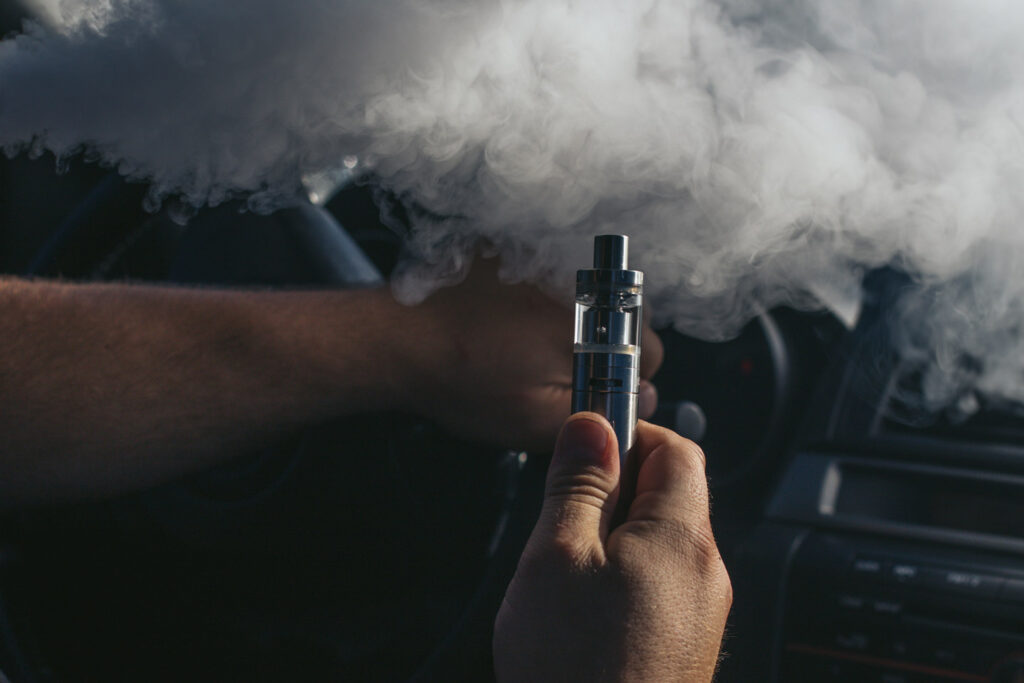
Can Vaping Cause Oral Cancer? In recent years, the popularity of vaping has surged, especially among individuals seeking a purportedly safer alternative to traditional smoking. However, with this rise in popularity comes an influx of concerns and questions, with one of the most prominent being: Can vaping cause oral cancer? Exploring the Myths Surrounding Vaping and Oral Cancer Myth 1: Vaping is Completely Safe One of the most prevalent myths surrounding vaping is that it is entirely safe. This misconception has been fueled by aggressive marketing tactics and the perception that since e-cigarettes don’t produce tobacco smoke, they must be harmless. However, the reality is far more complex. Vaping liquids contain a cocktail of substances, including potentially harmful chemicals such as formaldehyde and acetaldehyde, which can have adverse effects on oral health. Myth 2: Vaping Doesn’t Pose Oral Cancer Risks While some argue that vaping is a healthier alternative to smoking, it’s crucial to acknowledge that vaping is not devoid of risks. Emerging research has begun to shed light on the potential link between vaping and oral health issues, including a heightened risk of oral cancer. Several studies have highlighted the carcinogenic properties of certain chemicals found in vaping liquids, which could contribute to the development of cancerous cells in the oral cavity. Unveiling the Real Risks: Understanding the Research Scientific Studies and Findings A growing body of scientific research has started to investigate the relationship between vaping and oral cancer. A study published in the “Journal of the American Dental Association” found that e-cigarette vapor exposure led to DNA damage in oral cells, a crucial precursor to cancer development. Furthermore, research conducted by the University of California revealed that vaping liquid flavorings can impair cell function in a manner that might contribute to the growth of cancer cells. The Role of Nicotine Nicotine, a common component of vaping liquids, plays a significant role in the potential oral health risks associated with vaping. Research published in the “Journal of Cellular Physiology” suggested that nicotine exposure could promote the proliferation of oral cancer cells and hinder the body’s natural defense mechanisms against cancer development. Mitigating the Risks: Making Informed Choices While the research surrounding vaping and oral cancer is still evolving, it’s essential to make informed decisions regarding your health. Here are some steps you can take to mitigate potential risks: Choose Reputable Products: Opt for vaping products from reputable manufacturers that disclose their ingredient list and adhere to safety standards. Monitor Your Health: Regular dental check-ups are crucial for detecting any oral health issues early on. If you’re a vaper, make sure to inform your dentist about your habits. Limit Exposure: If you’re considering vaping as a smoking alternative, it’s advisable to explore other options for smoking cessation that have been more extensively studied and proven effective. In Conclusion: The Complex Connection Between Vaping and Oral Cancer In the ongoing debate surrounding the safety of vaping, it’s clear that the relationship between vaping and oral cancer is nuanced and multifaceted. While some myths persist regarding the harmlessness of vaping, emerging scientific research points to potential risks, particularly concerning oral health and cancer development. As the landscape of vaping-related research continues to evolve, staying informed and making thoughtful choices remains crucial to safeguarding our well-being.
What Are Black Triangle Teeth?

Can I Brush My Teeth Before Oral Surgery? Preparing for oral surgery involves several considerations, including whether or not to brush your teeth before the procedure. Maintaining optimal oral hygiene is crucial not only for promoting overall oral health but also for minimizing the risk of complications during and after surgery. In this comprehensive guide, we will delve into the topic of pre-operative oral hygiene and address common questions and concerns regarding brushing your teeth before oral surgery. Understanding Pre-Surgery Oral Hygiene Maintaining good oral hygiene before oral surgery is essential for several reasons. First and foremost, a clean mouth can help reduce the risk of post-operative infections, which can significantly impact the success of the procedure and prolong the recovery process. By brushing your teeth regularly, flossing, and using mouthwash, you can remove plaque, bacteria, and food debris that may harbor harmful pathogens and contribute to oral health issues. Consultation with Your Surgeon Before undergoing oral surgery, it’s crucial to consult with your surgeon or dental professional to receive personalized guidance on pre-operative oral hygiene practices. Your surgeon will evaluate your oral health status, the nature of the procedure, and any underlying medical conditions to determine the most appropriate recommendations for you. They may provide specific instructions on when and how to brush your teeth before surgery based on these factors. Guidelines for Brushing Before Oral Surgery While maintaining good oral hygiene is important before surgery, the timing and method of brushing your teeth may vary depending on the specific circumstances of your procedure. In many cases, surgeons recommend brushing your teeth on the day of surgery, including the morning of the procedure. However, there may be exceptions or special considerations based on the type of surgery you’re undergoing and your individual health needs. Special Considerations for Different Procedures While maintaining good oral hygiene is important before surgery, the timing and method of brushing your teeth may vary depending on the specific circumstances of your procedure. In many cases, surgeons recommend brushing your teeth on the day of surgery, including the morning of the procedure. However, there may be exceptions or special considerations based on the type of surgery you’re undergoing and your individual health needs. Importance of Effective Communication Effective communication with your surgeon is key to addressing any concerns or questions you may have about pre-operative oral hygiene. Be sure to discuss your oral hygiene habits, any medications you’re taking, and any specific issues you’ve experienced with your surgeon during your pre-surgical consultation. They can provide personalized guidance and support to help you optimize your oral health before surgery. Conclusion Brushing your teeth before oral surgery is generally recommended as part of pre-surgery oral hygiene practices. However, it’s essential to consult with your dentist for personalized recommendations and follow any specific instructions provided. By maintaining good oral health before and after surgery, you can help ensure a successful outcome and promote optimal healing. Effective communication and adherence to pre-operative guidelines are essential steps in preparing for oral surgery and minimizing the risk of complications.
How Long Does a Dental Cleaning Take?

How Long Does a Dental Cleaning Take? Maintaining good oral hygiene is essential for overall health, and one of the key components of oral care is regular dental cleanings. Dental cleanings, also known as prophylaxis or dental hygiene appointments, are crucial in preventing oral health issues such as cavities, gum disease, and bad breath. Many people wonder how long a dental cleaning takes and what to expect during this routine dental procedure. The Duration of a Dental Cleaning The length of a dental cleaning can vary depending on several factors, including the patient’s oral health, the presence of underlying dental issues, and the thoroughness of the cleaning required. On average, a dental cleaning typically takes between 30 minutes to one hour. However, it’s essential to understand that this is just an estimate, and the actual duration may differ from one patient to another. Key Factors of Professional Teeth Cleaning Professional teeth cleaning is a crucial aspect of maintaining good oral hygiene and preventing dental problems. It typically involves several key elements to ensure your teeth and gums stay healthy: X-Rays X-rays, also known as dental radiographs, are an essential part of professional teeth cleaning. They allow the dentist or dental hygienist to assess the overall health of your teeth, gums, and jawbone. X-rays can reveal hidden issues such as cavities, impacted teeth, bone loss, and other dental conditions that may not be visible during a regular visual examination. SPlaque and Tartar Removal Plaque is a soft, sticky film of bacteria that forms on the teeth, while tartar (or dental calculus) is hardened plaque that cannot be removed through regular brushing and flossing. Professional cleaning aims to remove both plaque and tartar from the teeth and along the gumline. This process helps prevent tooth decay, gum disease, and bad breath. Scaling Dental scalers are specialized instruments used by dental professionals to scrape away plaque and tartar from the tooth surfaces. This process, called scaling, is typically performed by a dental hygienist. Scaling helps to eliminate the bacteria-laden deposits that can lead to gum inflammation and cavities. Flossing Flossing is an integral part of professional teeth cleaning. Dental professionals use dental floss to clean between the teeth and remove debris and plaque buildup from areas that toothbrushes cannot reach effectively. This thorough flossing helps to prevent cavities and gum disease in between dental cleanings. Steps Involved in a Dental Cleaning A dental cleaning typically consists of several steps, each designed to ensure the removal of plaque, tartar, and bacteria from the teeth and gums. Here is a breakdown of the key steps involved: Oral Examination: The dental hygienist or dentist will begin by examining your mouth, checking for any signs of dental issues, such as cavities, gum disease, or oral cancer. Scaling: Using specialized dental instruments, the hygienist will remove plaque and tartar buildup from the tooth surfaces, especially around the gumline and between teeth. This step helps prevent gum disease and cavities. Polishing: After scaling, the hygienist will polish your teeth using a gritty paste and a high-powered toothbrush. This step removes surface stains and leaves your teeth feeling smooth. Fluoride Treatment (Optional): In some cases, a fluoride treatment may be applied to strengthen tooth enamel and reduce the risk of cavities. Education and Recommendations: The hygienist or dentist may offer guidance on proper oral care techniques, including brushing, flossing, and dietary recommendations to maintain good oral health. The Importance of Regular Dental Cleanings Regular dental cleanings are essential for several reasons: Preventing Oral Issues: Dental cleanings help remove plaque and tartar, reducing the risk of cavities, gum disease, and tooth decay. Early Detection: Dental professionals can detect dental issues early during routine cleanings, allowing for prompt treatment and prevention of more significant problems. Fresh Breath: Cleanings can help eliminate bad breath caused by bacteria in the mouth. Maintaining Overall Health: Good oral health is linked to overall well-being, as dental issues can contribute to systemic health problems like heart disease and diabetes. Conclusion A dental cleaning is a vital component of maintaining good oral health. While the duration of a dental cleaning can vary, it typically takes between 30 minutes to one hour. The procedure involves several steps, including examination, scaling, polishing, and education on proper oral care techniques. Regular dental cleanings are essential for preventing oral issues, detecting problems early, and promoting overall health. To maintain a healthy smile, be sure to schedule and attend your dental cleanings as recommended by your dentist.
Can You Eat Chips With A Permanent Crown?
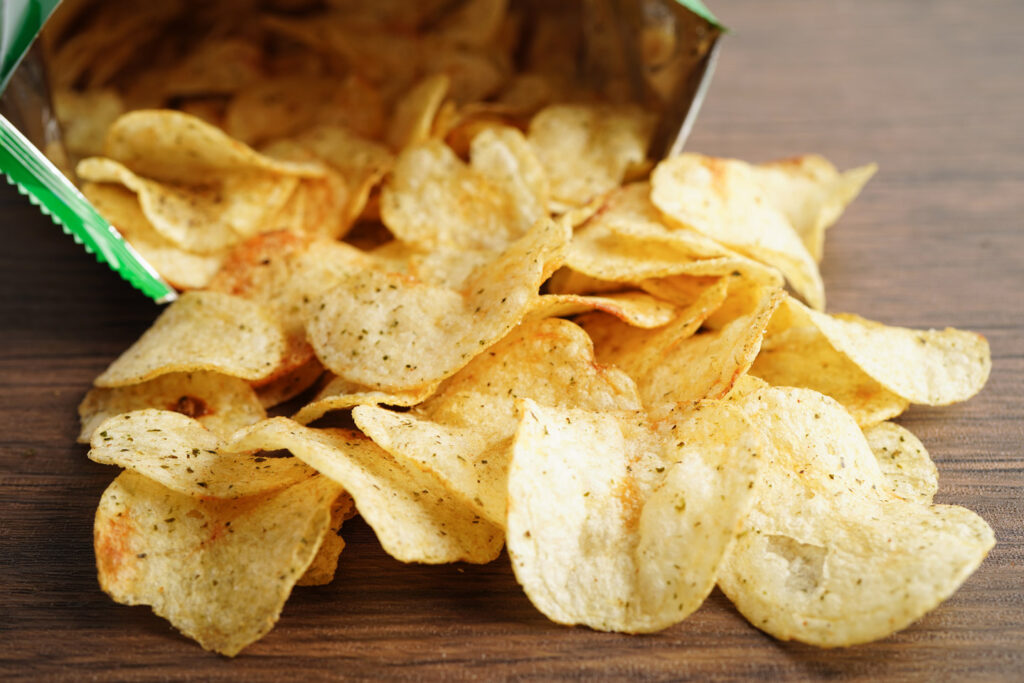
Can I Brush My Teeth Before Oral Surgery? Dental crowns, often crafted from durable materials such as porcelain, metal, or a combination, serve as a stalwart solution for teeth compromised by decay, fractures, or other dental issues. Recent recipients of crowns might have some confusion regarding potential changes to their eating habits including foods such as chips and whether they can be eaten with a permanent crown. In this comprehensive exploration, we will delve into the intricacies of permanent crowns, the potential challenges posed by indulging in crunchy snacks, and the guidelines one should adhere to for a snack-friendly experience. Understanding Permanent Crowns Permanent crowns are meticulously designed to withstand the everyday forces of biting and chewing. Whether your crown is fashioned from porcelain for a natural appearance or metal for added durability, its primary purpose is to provide a robust and long-lasting solution for teeth in need of reinforcement. Despite their resilient nature, it is imperative to handle your dental crown with care to ensure its sustained efficacy in safeguarding the underlying tooth. Challenges of Eating Chips with a Permanent Crown Chips, renowned for their crispy and crunchy texture, present a unique set of challenges for individuals with dental crowns. The force exerted during the act of biting into hard or crunchy foods may not align favorably with the resilience of your dental crown. If this becomes a regular practice or if the chips in question are particularly hard, there exists the potential for damage, ranging from minor chipping to more severe cracking. This, in turn, could lead to complications that might necessitate additional dental interventions. Guidelines for Brushing Before Oral Surgery While maintaining good oral hygiene is important before surgery, the timing and method of brushing your teeth may vary depending on the specific circumstances of your procedure. In many cases, surgeons recommend brushing your teeth on the day of surgery, including the morning of the procedure. However, there may be exceptions or special considerations based on the type of surgery you’re undergoing and your individual health needs. Guidelines for Eating Chips with a Permanent Crown While the consensus leans towards refraining from the habitual consumption of hard and crunchy foods with a permanent crown, there are prudent guidelines to consider if the allure of a satisfying snack prevails: Choose Wisely: When the craving for chips beckons, opt for varieties that are less likely to pose a threat. Thin and lightly salted chips are generally softer and may be more gentle on your dental crown compared to their thicker, kettle-cooked counterparts. Practice Moderation: If the allure of chips proves irresistible, do so in moderation. Consuming smaller amounts diminishes the impact on your dental crown, thereby reducing the risk of potential damage. Overindulgence in hard or crunchy snacks heightens the probability of complications. Avoid Biting Directly: Rather than biting directly into a chip, consider breaking it into smaller, more manageable pieces. This approach minimizes the force applied to your crown, thereby mitigating the risk of any unexpected damage. Delicate nibbling is a more tooth-friendly technique. Mindful Chewing: Adopt a mindful approach to chewing, favoring a slower and more deliberate pace. By avoiding the use of excessive force, you become more conscious of the way your teeth come together, minimizing the impact on your dental crown and diminishing the risk of potential damage. Maintain Oral Hygiene: The cornerstone of any dental care regimen, proper oral hygiene is crucial for the longevity of your dental crown. Regular brushing, flossing, and routine dental check-ups not only preserve the health of your natural teeth but also prevent issues that could compromise the integrity of the crown. Consequences of Ignoring Guidelines Disregarding the aforementioned guidelines for eating with a permanent crown could result in various consequences, each with the potential to compromise the effectiveness of the dental work: Chipped or Cracked Crown: The force applied while biting into hard or crunchy foods, such as chips, can lead to visible damage to the crown. A chipped or cracked crown may not provide the necessary protection for the underlying tooth. Dislodged Crown: Excessive force or trauma can cause a crown to become dislodged. In such cases, prompt dental attention is required to reattach the crown and restore its functionality. Secondary Decay: Damaged crowns may create spaces where bacteria can enter, leading to decay in the underlying tooth structure. Secondary decay poses a risk to both the crown and the overall health of the affected tooth. Necessity for Replacement: In extreme cases, repeated damage may necessitate the replacement of the entire crown. This process involves additional time, expense, and potential discomfort for the patient. While it’s not ideal to make a habit of eating chips with a permanent crown, occasional indulgence can be managed with proper care and mindfulness. Choosing softer chip varieties, practicing moderation, and being conscious of your chewing habits are essential to avoid potential complications. Maintaining good oral hygiene and scheduling regular check-ups with your dentist are vital components of ensuring the longevity of your dental crown. If you have concerns about your dietary choices or experience any issues with your crown, consult your dentist for personalized advice and guidance. By taking a proactive approach to your oral health, you can continue to enjoy your favorite snacks while preserving the integrity of your dental work. Conclusion While the occasional indulgence in chips with a permanent crown is manageable, it’s important to choose softer varieties, practice moderation, and be mindful of chewing habits. Prioritize good oral hygiene, regular dental check-ups, and consult your dentist for personalized advice if you have concerns or issues with your crown. Taking a proactive approach to oral health allows you to enjoy snacks while preserving dental work integrity.
Can You Eat Bread After Wisdom Teeth Removal?

Can You Eat Bread After Wisdom Teeth Removal? Wisdom teeth removal is a routine dental procedure that many individuals undergo to prevent potential oral health issues. Post-extraction care, including dietary considerations, is paramount for a smooth recovery. One common query that arises during this time is whether it’s safe to indulge in bread. Let’s delve deeper into the details and explore the dos and don’ts of incorporating bread into your diet after wisdom teeth removal. Understanding the Post-Extraction Period The post-extraction period is crucial for the healing of oral tissues. After the removal of wisdom teeth, the body initiates a natural recovery process that requires careful attention to diet. During these initial days, the oral tissues are sensitive, making it imperative to avoid certain foods that could impede the healing process or cause discomfort. The Importance of Soft Foods Soft foods play a pivotal role in the post-extraction diet, providing a gentler option for the healing of oral tissues. Foods like yogurt, mashed potatoes, and smoothies are commonly recommended, as they help prevent unnecessary strain on the surgical sites. However, not all soft foods are created equal when it comes to the realm of bread. Choosing the Right Type of Bread When contemplating bread consumption after wisdom teeth removal, the type of bread becomes a critical consideration. Opting for soft and easily chewable varieties is essential. While white bread is generally softer than whole grain or artisanal bread, it’s crucial to assess individual preferences and tolerances. Crusty or overly dense bread may pose challenges during the initial days of recovery. Bread Preparations for a Comfortable Experience To make bread more tooth-friendly after wisdom teeth removal, consider the following preparations: Light toasting: Lightly toasting bread can render it softer and more manageable to chew. Smaller pieces: Cutting bread into smaller, bite-sized pieces reduces the effort required for chewing, minimizing the strain on the healing oral tissues. Potential Challenges and Solutions While soft bread can be a suitable option for many individuals, some may still encounter challenges. It’s crucial to be mindful of variations in pain tolerance and the rate of healing. In cases where chewing remains uncomfortable, patients may opt for alternatives like dipping bread in soup or soft spreads, making it easier to consume. General Guidelines for Post-Extraction Diet Beyond bread considerations, adhering to these general guidelines can contribute to a smoother recovery: Adequate hydration: Staying hydrated is crucial for overall health and can prevent dehydration during the recovery period. Avoidance of crunchy or hard foods: Steering clear of chips, nuts, and other crunchy snacks is essential to prevent irritation to the surgical sites. Limiting spicy or acidic foods: These can cause discomfort or irritation to the healing tissues. Adhering to dentist’s advice: Specific post-extraction care instructions provided by your dentist should be diligently followed for a successful recovery. Balancing Act: Approach to Post-Extraction Diet Overall, incorporating bread into your diet after wisdom teeth removal is indeed possible, provided you make informed choices regarding the type of bread and its preparation. Soft, easily chewable options can be seamlessly integrated, contributing to a more comfortable recovery experience. However, individual experiences may vary, necessitating a keen understanding of one’s own body and a willingness to adapt dietary choices accordingly. With a thoughtful approach to your diet and a commitment to following your dentist’s instructions, you will be on the path to a swift and easy recovery. Beyond Bread: A Wholesome Recovery Diet While the focus here has been on bread, it’s crucial to remember that a wholesome recovery diet encompasses a variety of nutrient-rich foods. Consider incorporating soft fruits, cooked vegetables, and protein sources like eggs and yogurt. These options not only contribute to your overall nutritional needs but also add variety to your post-extraction culinary landscape. Consult Your Dentist for Personalized Guidance Every individual’s journey through wisdom teeth removal and recovery is unique. If you have specific concerns or dietary considerations, don’t hesitate to consult your dentist. They can provide personalized guidance based on your oral health, helping you make the best choices for a comfortable and speedy recovery.
Post Dental Cleaning Food Guide: When and What Can You Eat?

Post Dental Cleaning Food Guide: When and What Can You Eat? It’s essential to approach post-dental cleaning eating with caution to preserve the health of your teeth and gums. This guide delves into the recommended timeframe for consuming food after a dental cleaning. Additionally, it offers insights into tooth-friendly food choices, ensuring a satisfying and beneficial post-cleaning experience for your oral health. When to Eat After Dental Cleaning After your dental cleaning session, dental professionals typically recommend waiting at least 30 minutes before consuming any food or beverages. This waiting period is not arbitrary; it plays a significant role in maximizing the benefits of your cleaning. During this time, your enamel is more vulnerable to acid exposure. Delaying your meal allows your saliva to kick in and neutralize acids, contributing to the restoration of a healthy pH level in your mouth. Tooth-Friendly Choices for Immediate Post-Cleaning Dining Water is Your Friend: Start with a refreshing choice like water. Besides helping to rinse away any residual cleaning agents, water promotes saliva production, which aids in the remineralization of your teeth. Leafy Greens and Veggies: Choose nutrient-rich, crunchy vegetables such as carrots or celery. These foods not only stimulate saliva flow but also provide essential vitamins for maintaining optimal oral health. Healthy Dairy: Dairy products like yogurt or cheese are excellent options. Packed with calcium and phosphates, they contribute to rebuilding tooth enamel and neutralizing acids, creating a protective layer for your teeth. Lean Proteins: Incorporate lean proteins like chicken or fish into your post-cleaning meal. These proteins offer essential nutrients without introducing excessive sugars that can be harmful to your recently cleaned teeth. The Waiting Game: Why Patience Pays Off While the aroma of your favorite meal might be irresistible, exercising patience can significantly benefit your oral health. Waiting after a dental cleaning allows your teeth to absorb the full benefits of the session and minimizes the risk of exposing vulnerable enamel to acidic or sugary substances. Post-Cleaning Dental Care Tips Hydration Matters: Stay hydrated throughout the day by drinking plenty of water. Adequate hydration not only supports overall health but also promotes saliva production, helping to maintain a healthy oral environment. Avoid Sugary Snacks: Steer clear of sugary snacks and beverages, especially in the immediate post-cleaning period. Sugars can feed harmful bacteria, contributing to plaque buildup and potentially undermining the effects of your cleaning. Gentle Brushing: If you plan to eat shortly after your cleaning, opt for a gentle toothbrushing session. Use fluoride toothpaste to strengthen your teeth and maintain a clean, fresh feeling. Regular Dental Checkups: Routine dental cleanings are essential for optimal oral health. Schedule regular checkups to address any concerns promptly and keep your smile in top condition. Consult Your Dentist for Personalized Advice Individual factors, such as the extent of your dental cleaning and your overall oral health, can influence post-cleaning dietary recommendations. It’s always advisable to consult your dentist for personalized advice tailored to your specific needs and dental history. Conclusion While the desire to enjoy a satisfying meal right after a dental cleaning is understandable, incorporating patience and making mindful food choices can contribute to the long-term health of your teeth and gums. Embrace tooth-friendly options, adhere to the recommended waiting period, and consult your dentist for personalized guidance. By integrating these practices into your post-dental cleaning routine, you’ll not only enjoy a delightful meal but also contribute to maintaining a radiant and healthy smile for years to come.
How Often Should You Get a Dental Cleaning?
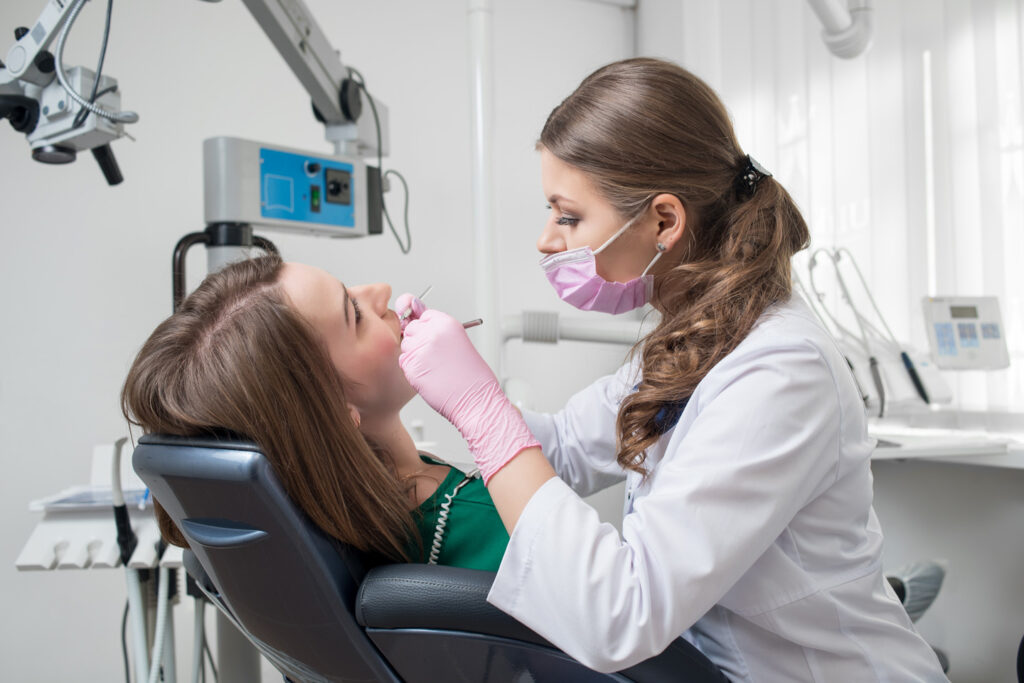
How Often Should You Get a Dental Cleaning? Maintaining optimal oral health is a cornerstone of overall well-being, and regular dental cleanings play a pivotal role in achieving that goal. But how often should you schedule these cleanings to ensure a radiant and healthy smile? Let’s delve into the expert recommendations and industry best practices for the ideal frequency of dental cleanings. Understanding the Importance of Dental Cleanings Regular dental cleanings, also known as prophylaxis, are crucial for preventing oral health issues and maintaining a vibrant smile. They involve the removal of plaque, tartar, and stains, contributing to the prevention of cavities, gum disease, and other dental issues. 1. The Standard Recommendation: Every Six Months The general consensus among dental professionals is to schedule a dental cleaning every six months. This biannual routine allows dentists and dental hygienists to monitor your oral health closely, detect potential issues early on, and provide preventive care. It’s a schedule that has proven effective for many individuals in maintaining a healthy smile 2. Tailored Recommendations Based on Individual Needs While a six-month schedule is widely recommended, individual needs may vary. Some individuals may require more frequent cleanings based on factors such as: Gum Health: Those with gum disease may need more frequent cleanings to manage the condition effectively. Smoking or Tobacco Use: Tobacco use can contribute to oral health issues, warranting more frequent cleanings. Medical Conditions: Certain medical conditions, such as diabetes, can impact oral health, necessitating more frequent cleanings. Genetic Predisposition: Individuals with a family history of dental issues may benefit from more frequent cleanings. 3. The Role of Personal Oral Care Habits Your at-home oral care routine is a critical factor in determining how often you should get a dental cleaning. Brushing twice a day, flossing daily, and using mouthwash contribute to maintaining a clean and healthy mouth. Individuals with impeccable oral hygiene practices may find that a six-month schedule is sufficient. However, consistently following a robust oral care routine is essential for everyone. 4. Children and Adolescents: Setting the Foundation For children and adolescents, establishing good oral hygiene habits early on is crucial. Dental professionals often recommend a visit to the dentist every six months for routine cleanings and preventive care. This helps set the foundation for a lifetime of excellent oral health. 4. The Benefits of Regular Check-ups Beyond the cleaning aspect, regular dental check-ups offer a comprehensive assessment of your oral health. Dentists can identify potential issues, provide oral cancer screenings, and offer guidance on maintaining optimal oral hygiene at home. 5. The Benefits of Regular Check-ups Beyond the cleaning aspect, regular dental check-ups offer a comprehensive assessment of your oral health. Dentists can identify potential issues, provide oral cancer screenings, and offer guidance on maintaining optimal oral hygiene at home. 6. Emerging Trends in Oral Health As technology advances, there is a growing interest in personalized oral health care. Some individuals may benefit from more frequent cleanings based on genetic predispositions or emerging risk factors. Discussing these options with your dentist can help tailor a cleaning schedule that suits your unique needs. Conclusion The ideal frequency for dental cleanings is typically every six months, serving as a standard recommendation for maintaining optimal oral health. However, individual factors such as gum health, lifestyle choices, and genetic predispositions may influence the need for more frequent cleanings. Work closely with your dentist to craft a personalized dental cleaning schedule tailored to your unique needs. By staying proactive and prioritizing regular cleanings, you contribute to the longevity of your teeth and the radiance of your smile. If you have specific concerns or questions about your oral health, consult with your dentist for personalized guidance.
How Long After a Dental Cleaning Can I Drink Coffee?

How Long After a Dental Cleaning Can I Drink Coffee? Deciding when it’s safe to enjoy your coffee after a dental cleaning can be tricky. The sensation of freshly cleaned teeth might make you hesitate before reaching for that comforting brew. In this blog, we’ll explore the ideal waiting time and delve into the factors that influence the timing of indulging in your favorite coffee after a dental cleaning. The Wait Time Dilemma After a dental cleaning, your teeth undergo a meticulous polishing process to eliminate plaque and stains. Additionally, your dentist might apply a fluoride treatment for enhanced protection. The immediate aftermath of a dental cleaning can leave your teeth vulnerable to external elements, including the acidity and potential staining from coffee. Understanding the Factors The duration you should wait before enjoying coffee post-cleaning is influenced by various factors: Fluoride Treatment: If your dentist has applied a fluoride treatment, it’s advisable to wait at least 30 minutes before consuming any food or beverages. This allows the fluoride to fully penetrate and fortify your teeth against potential threats. Staining Potential: Coffee is known for its ability to stain teeth. Waiting for about 30 minutes to an hour after a dental cleaning can significantly reduce the risk of your freshly cleaned teeth absorbing coffee stains. Acidity Levels: Coffee is acidic, and exposing your teeth to acidity immediately after a cleaning may not be ideal. Waiting for a bit allows your saliva to neutralize the pH in your mouth, minimizing the impact of acidity on your enamel. Balancing the Love for Coffee and Oral Health While adhering to the recommended waiting time is essential, there are strategies to balance your love for coffee with maintaining optimal oral health: Rinse with Water: After a dental cleaning, rinse your mouth with water to remove any residual cleaning agents and prepare your teeth for the introduction of other substances. Consider Temperature: Hot beverages can make your teeth more porous, increasing their susceptibility to stains. Consider allowing your coffee to cool slightly before indulging. Use a Straw : If you’re particularly concerned about stains, using a straw can minimize direct contact between the coffee and your teeth. Maintain Good Oral Hygiene: Regular dental cleanings, coupled with a robust oral hygiene routine, contribute to the overall health of your teeth. Brushing and flossing regularly can help combat the effects of staining and maintain a radiant smile. Taking a Deeper Dive Beyond the immediate post-cleaning period, it’s crucial to consider the long-term effects of coffee consumption on your oral health. While waiting before indulging in coffee is vital, moderation is key in preserving the whiteness of your teeth and preventing potential staining over time. Incorporating Coffee into a Healthy Lifestyle Coffee is more than just a beverage; it’s a ritual for many. Incorporating it into a balanced and healthy lifestyle involves not only considering its impact on your teeth but also acknowledging its potential benefits, such as antioxidants. Conclusion In the delicate balance between savoring your favorite coffee and maintaining a radiant smile, timing is crucial. Waiting for about 30 minutes to an hour after a dental cleaning allows you to enjoy your coffee without compromising the benefits of the cleaning process. Consider the factors like fluoride treatment, staining potential, and acidity levels to make an informed decision for your oral health. So, go ahead, savor that cup of coffee responsibly, and keep your smile sparkling!

